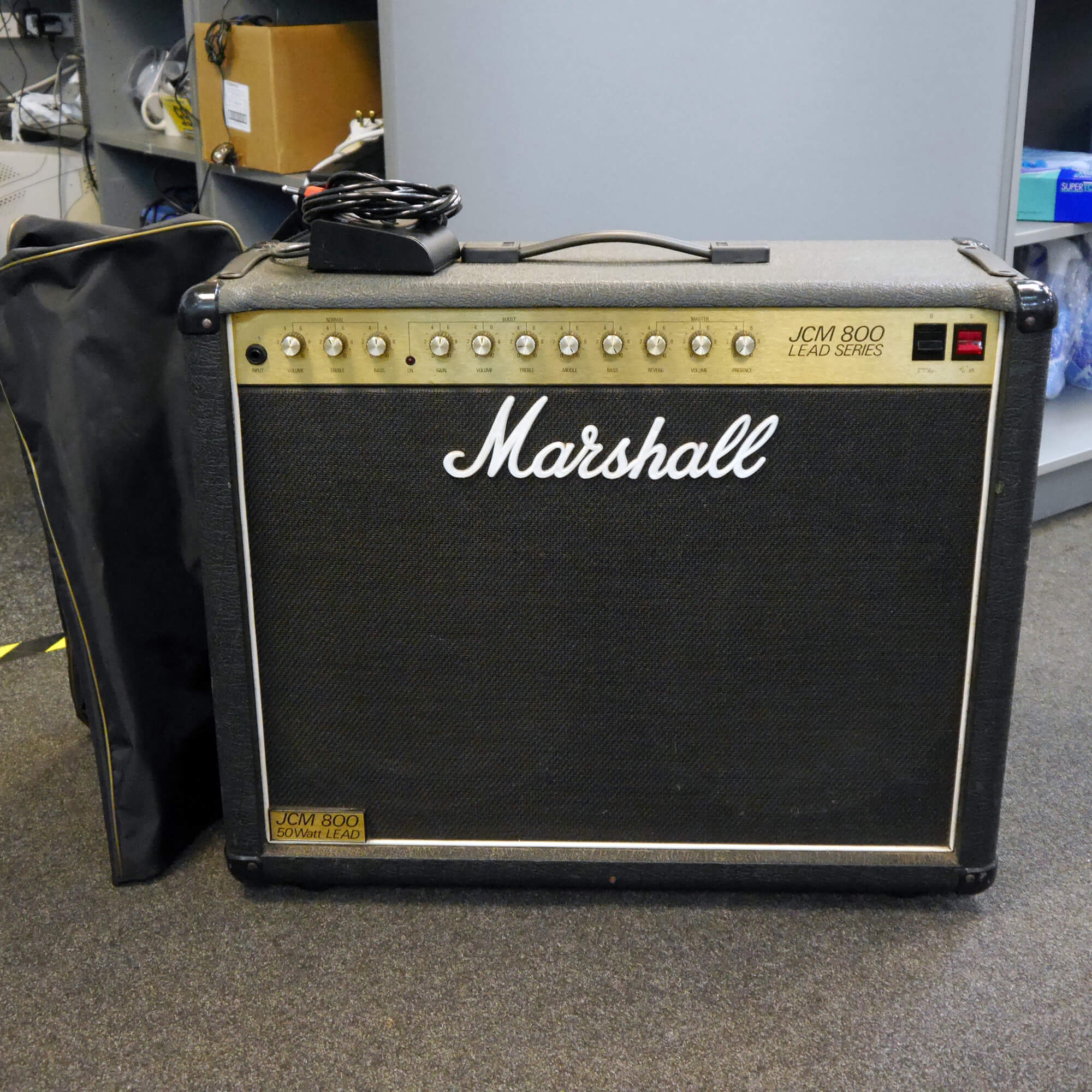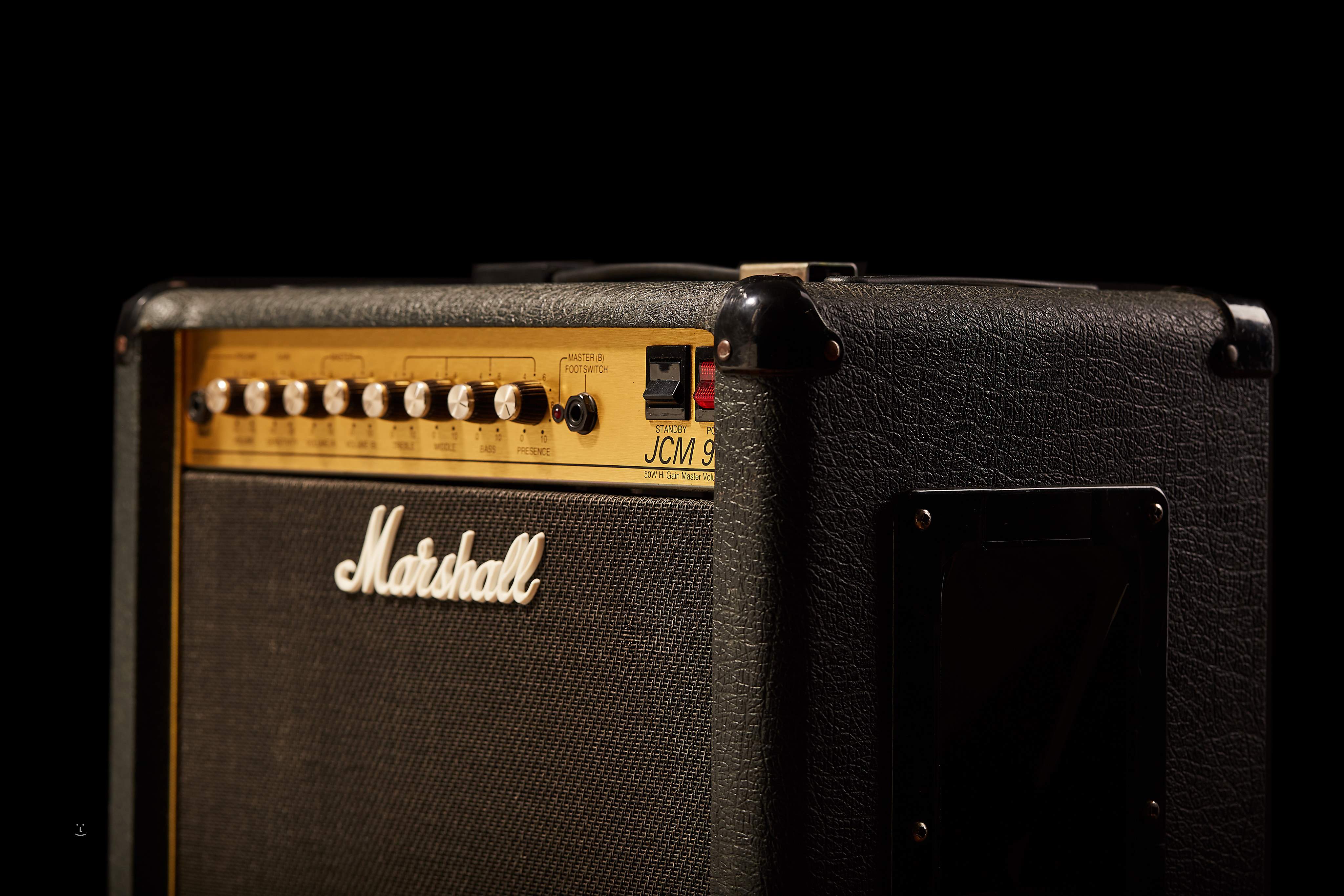
There is a difference between the early 2203/2204 and the later dual channel models 2205/2210 models. The JCM800 is considered a "hot" amplifier because it has more gain stages than comparable amplifiers. The amplifier was equipped with E元4 valves (tubes) for amps sold in the UK and 6550 tubes for amps exported to the United States. Still, some users prefer the pre-JCM800 amplifiers, claiming that those have a warmer, less "brittle" sound. Marshall quickly reverted to the older Celestions. Initially, users complained that the amplifiers (used with the standard Marshall cabinets) sounded flat compared to the older Marshalls, until it was discovered (by accident) that the fault was with the speakers: The new cabs had been equipped with a new kind of Celestion speakers. They also had an effects loop and reverb, also a first for Marshall. These were equipped with two channels, which could be activated via a foot switch, allowing for separate lead and rhythm sounds. Soon, however, the Model 22 appeared on the market. The first JCM800s were in fact Master Volume amplifiers (Models 22, at 100 and 50 watts respectively), repackaged in new boxes with new panels. Compared to the earlier "Master Volume" series, they offered some advantages, including the possibility to be patched internally and linked with other amplifiers.
#Marshall jcm combo series
These were the second series of Marshalls equipped with a master volume, which allowed for more distortion at lower volumes. It quickly became a very successful amplifier, and ubiquitous amongst hard rock and heavy metal bands. The series included head amplifiers with matching cabinets, as well as combos, and was produced until the 1990s. For example, the JCM900 was released in 1990 and the JCM2000 was released in 2000. It was later noted that "800" stood for the decade.

The name comes from Jim Marshall's initials, "J.C.M.", coupled with the meaningless "800" from the number plate on his car. The JCM800 was the first series produced after the contract expired. So i'm not knocking the channel eat amps, just pointing out a few things for the O.P.In 1981, Marshall finally reached the end of its 15-year distribution deal with Rose-Morris, which had severely limited its potential to sell amplifiers outside England Rose-Morris tagged 55% onto the sticker price for exported models. If it didn't, I would have had one installed. When I bought my single channel 4104, it had a tube buffered loop added already.


The loop on the 2 channel amps is a good thing for sure. A delay/chorus/flange in front of a gained out single channel 800 sounds like crap, IMO. That amp had really sweet plug and play lead tones.I miss it, but now use a 4104 and a boost.pretty close to that sweet plug straight in lead tone.Īlso, if you want amp dirt and want to use time based effects, (delay, chorus, flange) a loop is almost required if you use moderate to high gain.

That said, I had an '83-2205 channel switcher and it was a cool amp even with the channel bleed, which doesn't matter if you use only the gain channel with the clean channel turned down. They fixed that somewhere around '85 or so. The early channel switchers had a few issues, most notably channel bleed. Click to expand.The channel switchers are great amps but.if you have the choice before purchase, look for one made after '85 or so, contrary to the single channel 100 watters.the earlier ones are more desirable.


 0 kommentar(er)
0 kommentar(er)
